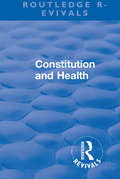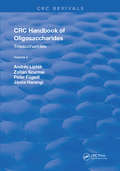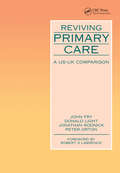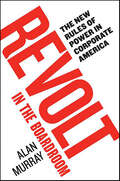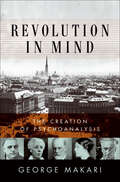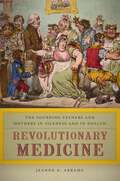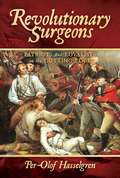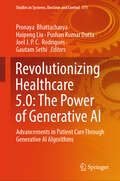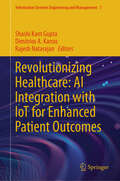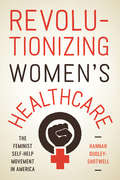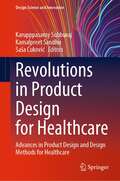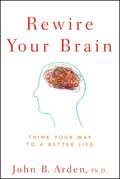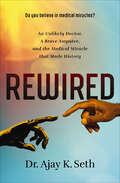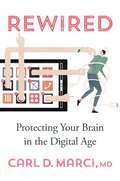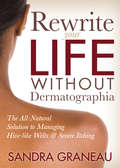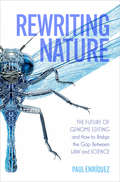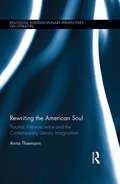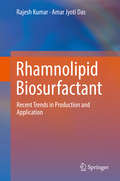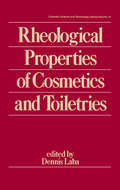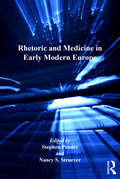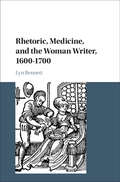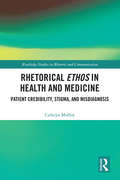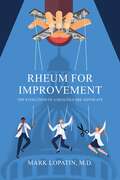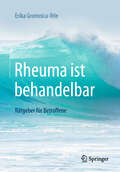- Table View
- List View
Revival: Constitution And Health (1933) (Routledge Revivals)
by Raymond PearlThe material in this book is an expansion of a lecture given at the Army Medical Center, Washington, D.C., on May 15, 1933. I have thought it best to leave it in the somewhat informal discourse of the lecture platform. References to the literature, and other annotations, are numbered consecutively and placed together at the end of the book. It should be pointed out here at the start, as it is in the text, that the author is not a medical man, but merely a biologist greatly interested in human biology; aware of his deficiencies in knowledge and experience consequent upon not having an equally lively sense of his inalienable right as a biologist to study man, the most interesting of all animals.
Revival: Volume II (CRC Press Revivals)
by Andras Liptak Zoltan Szurmai Janos Harangi Péter FügediChemical synthesis of oligosaccharides is important to organic chemistry because of the critical biological functions of carbohydrates. Unfortunately, no handbook has been published on the subject...until now. Volume 1: Disaccharides presents synthetic carbohydrate chemistry, lists the syntheses, and shows the route of each synthesis. Volume 2: Trisaccharides presents schematic figures and references. This series includes all oligosaccharides synthesized between 1960 and 1986. This allows oligosaccharides prepared in their free form to be presented, as well as those produced in protected form. The series contains data regarding glycosylation reaction, namely reaction conditions (solvent, promoter, temperature), the aglycon and the glycosyl donor used, and the structure and physical data of the isolated product. For disaccharides, the names of the reactants and the products are revealed, while with trisaccharides and higher oligomers, schematic figures provide a quick and easy way to access information concerning the entire process. These volumes will provide an important reference source for biochemists, biologists, and organic chemists.
Reviving Primary Care: A US-UK Comparison
by Donald W. Light John Fry Robert M. LawrenceThe quality of health care in the US depends on the patient's ability to pay and his or her insurance cover, at an annual cost of $3600 per head of population. In the UK, the quality of care costs less at an annual cost of $1000 per head of population, although care is sometimes delayed through a lack of resources. This book compares the two systems from the viewpoint of primary care, identifying some models of excellence from which both can benefit. It draws on the experience of the NHS reforms in the UK and the political imperative to control costs and improve the service in the US.
Revolt in the Boardroom: The New Rules of Power in Corporate America
by Alan MurrayThroughout the 20th century, American corporations were governed by autocratic, almost unaccountable chief executives. Their word was law and the only check on their power was a board of directors composed of their friends and allies.Then, in a stunning reversal, a momentous series of firings deposed the heads of some of the world's best-known companies: AIG, Morgan Stanley, Boeing, Hewlett-Packard and Pfizer, just to name a few. Formerly unchallenged CEOs found themselves under fire, often from their own handpicked boards. The number of deposed executives is astonishing. In 2004, the leaders of 600 companies were asked to leave. That number more than doubled in 2005 and reached 1,400 companies in 2006.Flexing new muscles, directors are assuming new and unfamiliar responsibilities. In Revolt in the Boardroom, Alan Murray reveals the inner workings of the new seat of power. Using the access afforded to him by his influential Wall Street Journal column, Murray tells the story of three seminal board revolts—the now-famous Hewlett-Packard drama, the ousting of Boeing's Harry Stonecipher and the end of the reign one of the world's most autocratic executives, Hank Greenberg at AIG.Murray goes further to chart the history of the corporation, the rise of governance and the effects of the new power gained by outside institutions like hedge funds and interest groups. Through it all, Murray shows how the job of chief executive has rapidly and permanently changed. Leaders like A. G. Lafley and Jeff Immelt govern instead of rule, build alliances and support instead of dictating direction and pay careful attention to a broader range of stakeholders than ever before.Revolt in the Boardroom is the first look at the new world of corporate power and the last word on the transformational events of the last two years.
Revolution in Mind: The Creation of Psychoanalysis
by George MakariA masterful history of one of the most important movements of our time, Revolution in Mind is a brilliant, engaging, and radically new work—the first ever to fully account for the making of psychoanalysis. In a sweeping narrative, George Makari demonstrates how a new way of thinking about inner life coalesced and won followers who spread this body of thought throughout the West. Along the way he introduces the reader to a fascinating array of characters, many of whom have been long ignored or forgotten.Amid great ferment, Sigmund Freud emerged as a creative, interdisciplinary thinker who devised a riveting new theory of the mind that attracted acolytes from the very fields the Viennese doctor had mined for his synthesis. These allies included Eugen Bleuler, Carl Jung, and Alfred Adler, all of whom eventually broke away and accused the Freudian community of being unscientific. Makari reveals how in the wake of these crises, innovators like Sándor Ferenczi, Wilhelm Reich, Melanie Klein, and others reformed psychoanalysis, which began to gain wide acceptance only to be banished from the continent and sent into exile due to the rise of fascism.Groundbreaking, insightful, and compulsively readable, Revolution in Mind goes beyond myth and polemic to give us the story of one of the most controversial intellectual endeavors of the twentieth century.
Revolutionary Medicine: The Founding Fathers and Mothers in Sickness and in Health
by Jeanne E AbramsAn engaging history of the role that George Washington, Thomas Jefferson, and Benjamin Franklin played in the origins of public health in America. Before the advent of modern antibiotics, one&’s life could be abruptly shattered by contagion and death, and debility from infectious diseases and epidemics was commonplace for early Americans, regardless of social status. Concerns over health affected the Founding Fathers and their families as it did slaves, merchants, immigrants, and everyone else in North America. As both victims of illness and national leaders, the Founders occupied a unique position regarding the development of public health in America. Historian Jeanne E. Abrams&’s Revolutionary Medicine refocuses the study of the lives of George and Martha Washington, Benjamin Franklin, Thomas Jefferson, John and Abigail Adams, and James and Dolley Madison away from politics to the perspective of sickness, health, and medicine. For the Founders, republican ideals fostered a reciprocal connection between individual health and the &“health&” of the nation. Studying the encounters of these American Founders with illness and disease, as well as their viewpoints about good health, not only provides a richer and more nuanced insight into their lives, but also opens a window into the practice of medicine in the eighteenth century, which is at once intimate, personal, and first hand. Today&’s American public health initiatives have their roots in the work of America&’s Founders, for they recognized early on that government had compelling reasons to shoulder some new responsibilities with respect to ensuring the health and well-being of its citizenry—beginning the conversation about the country&’s state of medicine and public healthcare that continues to be a work in progress.
Revolutionary Surgeons: Patriots and Loyalists on the Cutting Edge
by Per-Olof HasselgrenRevolutionary Surgeons offers an integrated picture of surgeons as political and military leaders of the American Revolution.Prominent surgeons participated in political activities that ultimately resulted in the breakaway of the colonies from Britain. Surgeons were members of the Sons of Liberty and other groups opposing Acts imposed on the colonies by Parliament. Similar to other groups in society, surgeons were split in their view of the growing opposition against the English rule of the American colonies and the wish to create an independent nation. Even with different opinions of the revolution, Loyalists and Patriots were often able to get along and live peacefully in the same communities. Surgery underwent dramatic developments during the 1700s. Although anesthesia was still a century in the future, surgeons performed extensive procedures, including laparotomies (opening of the abdomen) for tumors, mastectomies for cancerous growths, amputations of the leg above or below the knee, and cutting for the stone (removal of bladder stones). An increased understanding of human anatomy was one reason why surgeons kept moving the boundaries of what was considered possible. With no anesthesia, patients&’ screams from pain and horror were unimaginable. Many patients died from shock on the operating table or from postoperative bleedings and infections. Stories about surgeons as leaders of the American Revolution and about their heroic surgical procedures provide for an exciting read.
Revolutionizing Healthcare 5.0: Advancements in Patient Care Through Generative AI Algorithms (Studies in Systems, Decision and Control #571)
by Joel J. P. C. Rodrigues Pronaya Bhattacharya Pushan Kumar Dutta Gautam Sethi Haipeng LiuThis book serves as a critical resource that bridges the gap between burgeoning technology and its practical implementation. The book starts with an in-depth exploration of healthcare 5.0 principles, laying the foundation for the reader to understand the current shifts in healthcare paradigms. Then, it dives into the intricacies of generative models in healthcare, detailing how these algorithms work and the applications they serve. The book further delves into the subsets of generative machine learning and deep learning techniques in healthcare. As we move towards more complex applications, the book takes a turn to address the critical subject of interpretability and explainability in generative models, a topic that resonates profoundly given the life-critical nature of medical decisions. Finally, the book concludes with a robust discussion on the security and privacy concerns that accompany the deployment of GAI in real healthcare settings. By offering a multidimensional viewpoint—coupled with case studies, statistical analyses, and expert insights—the book ensures that the reader is left with a nuanced understanding of how GAI can be both a boon and a challenge in healthcare. As such, the proposed book serves as an indispensable resource for healthcare professionals, data scientists, researchers, and anyone invested in the future of healthcare and AI.
Revolutionizing Healthcare: AI Integration with IoT for Enhanced Patient Outcomes (Information Systems Engineering and Management #7)
by Shashi Kant Gupta Dimitrios A. Karras Rajesh NatarajanThis book showcases an endeavor to delve into the fusion of artificial intelligence (AI) and the Internet of Things (IoT) within the healthcare domain. The healthcare sector is currently experiencing a shift fueled by technological advancements and a heightened focus on providing tailored, efficient and impactful care to individuals. AI and IoT have emerged as facilitators of this evolution presenting opportunities to elevate patient results streamline operations and enhance decision-making within healthcare environments. This publication unites an array of viewpoints from experts in healthcare, technology and research domains. Through an array of enlightening chapters readers will embark on a journey exploring the applications, hurdles and consequences of merging AI with IoT in healthcare contexts. From analytics and remote monitoring to treatment suggestions and operational enhancements the potentials offered by AI and IoT is both captivating and revolutionary. As editors overseeing this volume’s creation we take pride in presenting an assemblage of contributions that mirror the research findings, innovations and optimal practices in healthcare technology. Our aim is to encourage readers to engage in thinking, creativity and teamwork when considering the impact of integrating AI with IoT on enhancing patient care and healthcare services.
Revolutionizing Healthcare: Impact of Artificial Intelligence on Diagnosis, Treatment, and Patient Care (Studies in Computational Intelligence #1182)
by Ajith Abraham Thipendra P. Singh Chandan Jyoti Kumar Kingsley Theophilus IguluThis book explores the transformative role of artificial intelligence (AI) in healthcare, emphasizing its shift from a futuristic concept to an essential part of modern medical systems. The articles cover a range of AI applications, from disease diagnosis and drug design to patient engagement and mental health treatment. Advances in machine learning (ML) and deep learning (DL) technologies have opened new possibilities for diagnosing complex conditions, with examples like predictive analysis for health risks and early diagnosis of diseases such as breast cancer and diabetic retinopathy. Additionally, AI's role in treating mental health disorders is highlighted. While AI offers vast benefits, the book stresses the importance of ethical considerations, such as patient privacy and equitable access. It also addresses challenges in integrating AI within existing healthcare systems, underscoring collaboration among stakeholders as crucial. This book ultimately provides a comprehensive look at AI’s potential to reshape healthcare.
Revolutionizing Women's Healthcare: The Feminist Self-Help Movement in America
by Hannah Dudley-ShotwellRevolutionizing Women’s Healthcare is the story of a feminist experiment: the self-help movement. This movement arose out of women’s frustration, anger, and fear for their health. Tired of visiting doctors who saw them as silly little girls, suffering shame when they asked for birth control, seeking abortions in back alleys, and holding little control over their own reproductive lives, women took action. Feminists created “self-help groups” where they examined each other’s bodies and read medical literature. They founded and ran clinics, wrote books, made movies, undertook nationwide tours, and raided and picketed offending medical institutions. Some performed their own abortions. Others swore off pharmaceuticals during menopause. Lesbian women found “at home” ways to get pregnant. Black women used self-help to talk about how systemic racism affected their health. Hannah Dudley-Shotwell engagingly chronicles these stories and more to showcase the creative ways women came together to do for themselves what the mainstream healthcare system refused to do.
Revolutions in Product Design for Healthcare: Advances in Product Design and Design Methods for Healthcare (Design Science and Innovation)
by Karupppasamy Subburaj Kamalpreet Sandhu Saša ĆukovićThis book coherently presents advances in design principles, processes, and methods in healthcare product design. It captures the implications of technological advances on designing healthcare products especially when market and societal needs pull each other in opposite directions. The contents focus on innovative design thinking processes and methods in developing healthcare products, applications of digital technologies in healthcare product design, amalgamation of artificial intelligence and design thinking for healthcare product design and quality, sustainability, and regulatory aspects in the design process. This book is a useful reference for those in the industry and academia.
Rewire Your Brain: Think Your Way to a Better Life
by John B. ArdenHow to rewire your brain to improve virtually every aspect of your life-based on the latest research in neuroscience and psychology on neuroplasticity and evidence-based practices Not long ago, it was thought that the brain you were born with was the brain you would die with, and that the brain cells you had at birth were the most you would ever possess. Your brain was thought to be "hardwired" to function in predetermined ways. It turns out that's not true. Your brain is not hardwired, it's "softwired" by experience. This book shows you how you can rewire parts of the brain to feel more positive about your life, remain calm during stressful times, and improve your social relationships. Written by a leader in the field of Brain-Based Therapy, it teaches you how to activate the parts of your brain that have been underactivated and calm down those areas that have been hyperactivated so that you feel positive about your life and remain calm during stressful times. You will also learn to improve your memory, boost your mood, have better relationships, and get a good night sleep. Reveals how cutting-edge developments in neuroscience, and evidence-based practices can be used to improve your everyday life Other titles by Dr. Arden include: Brain-Based Therapy-Adult, Brain-Based Therapy-Child, Improving Your Memory For Dummies and Heal Your Anxiety Workbook Dr. Arden is a leader in integrating the new developments in neuroscience with psychotherapy and Director of Training in Mental Health for Kaiser Permanente for the Northern California Region Explaining exciting new developments in neuroscience and their applications to daily living, Rewire Your Brain will guide you through the process of changing your brain so you can change your life and be free of self-imposed limitations.
Rewired: An Unlikely Doctor, a Brave Amputee, and the Medical Miracle That Made History
by Ajay K. SethA raccoon bite on the arm doesn&’t seem that serious, but it soon becomes a life-or-death medical crisis for Melissa Loomis. After days of treatment for recurring infection, it becomes obvious that her arm must be amputated. Dr. Ajay Seth, the son of immigrant parents from India and a local orthopaedic surgeon in private practice, performs his first-ever amputation procedure. In the months that follow, divine intervention, combined with Melissa&’s determination and Dr. Seth&’s disciplined commitment and dedication to his patients, brings about the opportunity for a medical breakthrough that will potentially transform the lives of amputees around the world.Rewired is the inspirational, miraculous story of Dr. Seth&’s revolutionary surgery that allows Melissa to not just move a prosthetic arm simply by thinking, but to actually feel with the prosthetic hand, just as she would with her natural arm. This resulted in what others have recognized as the world&’s most advanced amputee, all done from Dr. Seth&’s private practice in a community hospital, using a local staff, and with no special training or extensive research funding.
Rewired: Protecting Your Brain in the Digital Age
by Carl D. MarciLiving in an age of digital distraction has wreaked havoc on our brains—but there’s much we can do to restore our tech–life balance. We live in a world that is always on, where everyone is always connected. But we feel increasingly disconnected. Why? The answer lies in our brains. Carl D. Marci, MD, a leading expert on social and consumer neuroscience, reviews the mounting evidence that overuse of smart phones and social media is rewiring our brains, resulting in a losing deal: we are neglecting the relationships that sustain us and keep us healthy in favor of weaker and more ephemeral ties. The ability to connect and form strong social bonds is fundamental to human experience and emerged through unique structures in our brains. But ever-more-powerful technologies and ubiquitous access to media have hijacked our need to connect intimately and emotionally with others. The quick highs of clicking “like” and swiping right overstimulate the same neurological reward centers associated with social relationships. The habits that accompany our digital lifestyles are putting tremendous pressure on critical components of the brain associated with attention, emotion, and memory, changing how we process information and altering how we communicate and relate, even at a physiological level. As a psychiatrist working at the forefront of research on the impact of digital technology, Marci has seen this transformation up close and developed a range of responses. Rewired provides scientifically supported solutions for everyone who wants to restore their tech–life balance—from parents concerned about their children’s exposure to the internet to stressed workers dealing with the deluge of emails and managing the expectation of 24/7 availability.
Rewrite Your Life Without Dermatographia: The All-Natural Solution to Managing Hive-like Welts & Severe Itching
by Sandra GraneauIn Rewrite Your Life Without Dermatographia, those who suffer from severe itching that won’t go away learn new ways to control their symptoms. Those who suffer from severe and endless itching know the real cost of living with a skin condition: from the medical bills to confidence at work. In Rewrite Your Life Without Dermatographia, Sandra Graneau helps readers identify what triggers their symptoms and get them under control. This all-natural guide for healthy skin is the most comprehensive resource for professional women living with dermatographia. In this guide, readers learn the possible trigger for their symptoms, tools to help them overcome their symptoms’ trigger, and so much more. Within Rewrite Your Life Without Dermatographia, readers finally learn to take back control of their body and life.
Rewriting Nature: The Future of Genome Editing and How to Bridge the Gap Between Law and Science
by Paul EnríquezHistory will mark the twenty-first century as the dawn of the age of precise genetic manipulation. Breakthroughs in genome editing are poised to enable humankind to fundamentally transform life on Earth. Those familiar with genome editing understand its potential to revolutionize civilization in ways that surpass the impact of the discovery of electricity and the development of gunpowder, the atomic bomb, or the Internet. Significant questions regarding how society should promote or hinder genome editing loom large in the horizon. And it is up to humans to decide the fate of this powerful technology. Rewriting Nature is a compelling, though-provoking interdisciplinary exploration of the law, science, and policy of genome editing. The book guides readers through complex legal, scientific, ethical, political, economic, and social issues concerning this emerging technology, and challenges the conventional false dichotomy often associated with science and law, which contributes to a growing divide between both fields.
Rewriting the American Soul: Trauma, Neuroscience and the Contemporary Literary Imagination (Routledge Interdisciplinary Perspectives on Literature)
by Anna ThiemannRewriting the American Soul focuses on the political implications of psychoanalytic and neurocognitive approaches to trauma in literature, their impact on cultural representations of collective trauma in the United States, and their subversive appropriation in pre- and post-9/11 fiction. Anna Thiemann connects cutting edge trauma theory with the historical context from which it emerged and shows that contemporary novels encourage us to reflect critically on the cultural meanings and political uses of trauma. In doing so, it contributes to a new generation of trauma scholarship that challenges the dominant paradigm in literary and cultural studies. Moreover, the book intervenes in current debates about the relationship between literature and neuroscience insisting that the so-called neuronovel scrutinizes scientific developments and their political ramifications rather than adopting and translating them into aesthetic practices.
Rhamnolipid Biosurfactant: Recent Trends in Production and Application
by Rajesh Kumar Amar Jyoti DasThis book highlights the recent developments on rhamnolipid biosurfactant, its properties, role on the natural environment and various applications. Recently, it has shown promising application in Environment, Agriculture, food, petroleum, and pharmaceutical industries due to its environment-friendly and easily degradable nature. The book emphasizes on the various techniques that are utilized for the detection and isolation of rhamnolipid biosurfactant from microorganisms. It highlights the various aspects of the rhamnolipid biosurfactants including structural characteristics, production, and its application. The book presents the current knowledge and the latest advances in the function-based metagenomics strategies to facilitate the exploration of the novel biosurfactants.
Rheological Properties of Cosmetics and Toiletries (Cosmetic Science and Technology)
by Dennis LabaThis volume in the Cosmetic Science and Technology series covers the important rheological aspects of cosmetic and toiletry formulations, including theoretical physical chemistry, instrumentation and measuring techniques, raw materials and stability predictions. The work discusses the specific rheological requirements of nail polish, antipersirants and deodorants, dentifrices, hair care products, creams and lotions.
Rhetoric and Medicine in Early Modern Europe (Literary And Scientific Cultures Of Early Modernity Ser.)
by Nancy S. StrueverThrough close analysis of texts, cultural and civic communities, and intellectual history, the papers in this collection, for the first time, propose a dynamic relationship between rhetoric and medicine as discourses and disciplines of cure in early modern Europe. Although the range of theoretical approaches and methodologies represented here is diverse, the essays collectively explore the theories and practices, innovations and interventions, that underwrite the shared concerns of medicine, moral philosophy, and rhetoric: care and consolation, reading, policy, and rectitude, signinference, selfhood, and autonomy-all developed and refined at the intersection of areas of inquiry usually thought distinct. From Italy to England, from the sixteenth through to the mid-eighteenth century, early modern moral philosophers and essayists, rhetoricians and physicians investigated the passions and persuasion, vulnerability and volubility, theoretical intervention and practical therapy in the dramas, narratives, and disciplines of public and private cure. The essays are relevant to a wide range of readers, including cultural, literary, and intellectual historians, historians of medicine and philosophy, and scholars of rhetoric.
Rhetoric, Medicine, and the Woman Writer, 1600–1700
by Lyn BennettHow did physicians come to dominate the medical profession? Lyn Bennett challenges the seemingly self-evident belief that scientific competence accounts for physicians' dominance. Instead, she argues that the whole enterprise of learned medicine was, in large measure, facilitated by an intensely classical education that included extensive training in rhetoric, and that this rhetorical training is ultimately responsible for the achievement of professional dominance. Bennett examines previously unexplored connections among writers and genres as well as competing livelihoods and classes. Engaging the histories of rhetoric, medicine, literature, and culture throughout, she goes on to focus specifically on the work of women who professed as well as practiced medicine. Pointing to some of the ways women's writing shapes realities of body, mind, and spirit as it negotiates social, cultural, and professional ideologies of gender, this book offers an important corrective to some long-held beliefs about women's role in early modern discourse.
Rhetorical Ethos in Health and Medicine: Patient Credibility, Stigma, and Misdiagnosis (Routledge Studies in Rhetoric and Communication)
by Cathryn MolloyThis book explores rhetorical ethos and its ongoing role in patients’ credibility and in misdiagnoses stemming from gender, race and class-based biases. Drawing on the concept of ethos as a theoretical framework, it explores health and mental illness across different conditions and across different methodological approaches. Extending work on ethos in clinical encounters and public discourse about biomedicine and presenting new research on the rhetoric of mental health, stigma and mental illness, the book explores how bias in clinical settings can lead to symptoms labelled "in the patient’s head" masking treatable medical problems. This notable contribution to the rhetoric of health and medicine will be of interest to all researchers and graduate students of rhetoric and composition studies, rhetoric of health and medicine, disability studies, medical humanities, communication, and psychology.
Rheum for Improvement: The Evolution of a Health-Care Advocate
by Mark LopatinRheum for Improvement is a physician’s account of how corporate medicine has transformed health care from a human interaction between a patient and their physician into a business transaction between a consumer and a provider. It is also a personal story of how frivolous legal action triggered that physician to become an outspoken advocate for health-care reform. It will be of interest to anyone who interacts with our health-care system, but especially physicians, who must navigate bureaucratic obstacles on a daily basis.
Rheuma ist behandelbar: Ratgeber Für Betroffene
by Erika Gromnica-IhleRheuma – was jetzt? Das Buch klärt verständlich auf, welche Formen es gibt, an welchen Symptomen die Krankheit zu erkennen ist und warum jemand erkrankt. Erfahren Sie, wie man Rheuma behandeln kann, was Ihnen hilft und was gut tut. Nach den ersten Anzeichen und der Diagnose des Arztes stellen sich dem Patienten viele Fragen, die dieses Buch beantwortet. Lassen Sie sich motivieren, mit der Krankheit leben zu lernen. So werden Sie sicher im Umgang mit Ihrem Körper und im Dialog mit Ihren Behandlern. Nehmen Sie Ihre Zukunft mit Rheuma selbst in die Hand.
